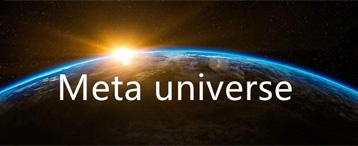-
Are all cryptocurrencies based on blockchain? Cryptocurrency vs blockchain
 linkweb3
linkweb3 2022-11-30
2022-11-30 4792
4792 Tech
Tech
-
Summary:Are all cryptocurrencies based on blockchain? Many cryptocurrencies are built on the blockchain technology, but there are also some parts are not.
Are all cryptocurrencies based on the blockchain? There are thousands of different digital currencies using blockchain technology to be used for extremely diverse applications in the digital economy. Bitcoin is undoubtedly the most popular cryptocurrency, because it has a strong momentum among young generations, but developers have been innovative blockchain technology and their uses. Cryptocurrencies and blockchain technology are usually regarded as the same thing. This makes cryptocurrencies without the underlying blockchain technology. Whether all cryptocurrencies are based on the blockchain? What are the relationship between cryptocurrency and blockchain?
Definition of cryptocurrencies
Cryptocurrencies (also known as cryptocurrencies) are digital currencies designed to exchange mediums. It uses cryptography to protect and verify transactions, as well as the creation of new units of specific digital currency.
Many cryptocurrencies are based on blockchain technology. Blockchain technology is a distributed ledger for compulsory execution by distributed computer networks. Cryptocurrencies are different from legal currencies such as the US dollar or pound, because any central institution does not issue them, which makes them may not be affected by government intervention or manipulation.
Most cryptocurrencies use blockchain technology to record transactions. For example, both the Bitcoin network and the Ethereum network are based on blockchain.
For citizens or banks to have the legitimateness of cryptocurrencies, the policies of governments of various countries are mixed. China has implemented blockchain technology in multiple industries, including national digital currencies launched in 2020. In order to appreciate their respective currencies, similar projects, including EU and Western countries, including the European Union and the United States.
What is cryptocurrency?
Cryptocurrencies are a string of computer code that can represent assets, concepts or projects -whether it is tangible, virtual or numbers -for various purposes and different valuations. Initially, these coins were aimed at acting as a currency.
Cryptocurrencies are not like legal currencies, such as US dollars, euros or yen. The legal currency is tangible; it is managed by the central authorities and operates as a value storage method: you can use any legal currency to exchange goods and services. But cryptocurrency -including various types of coins we discuss here -can be used for many purposes outside the currency. Cryptocurrencies as a "currency" are the usage of only the surface of the blockchain function. Because they are built on blockchain technology, some cryptocurrencies can provide solutions for long -term problems of almost every department in our economy.
How does cryptocurrency work?
Most cryptocurrencies work without central banks or government support. Called decentralized technologies called blockchain support the operation of cryptocurrencies, rather than relying on government guarantees.
Cryptocurrencies do not exist in the form of a pile of banknotes or coins. Instead, they only live on the Internet. It is determined by the market forces created by those who seeks to buy or sell them as virtual tokens.
Cryptocurrencies are formed by the process of excavation. This process needs to use computer processing capabilities to solve complex mathematical problems to earn coins. Users can also buy currency from their agents, and then they can use encrypted wallets to store and consume.
Blockchain usually plays a role through proof-of-work (POW) or proof-of-stake (POS) consensus algorithm. POW is based on miners, and miners usually specify specific computing machines for the process.
On the other hand, POS is running on pledge. In the Staking system, it is distributed to the network by holding assets in some designated wallets to help run the network. Many POS assets also allow master nodes -a more complicated pledge process usually requires a certain minimum number of tokens.
How many cryptocurrencies are there?
There are tens of thousands of different cryptocurrencies in the world today. Although each purpose is designed to provide some new features or functions, most of them are based on the principle similar to Bitcoin:
• Cryptocurrencies are not issued, regulated or supported by central institutions such as banks or government. They are scattered, not concentrated.
• Cryptocurrencies are created using distributed ledger (blockchain) and point -to -point (P2P).
• Bitcoin and other coins use special computer code encryption (protection) called cryptography.
• As an asset, cryptocurrencies are usually stored in digital wallets, usually blockchain wallets, allowing users to manage and trade their coins.
As of the end of 2022, there were more than 20,000 different types of cryptocurrencies, and the total market value (market value) of all cryptocurrencies was $ 2 trillion.
What is the blockchain in cryptocurrencies?
Although the blockchain looks complicated, its core concept is very simple. Database or blockchain is a digital classification account. To understand the concept of the blockchain, we must first understand what database is. The database is a data set preserved in a computer system in an electronic format.
Distributed ledger technology (DLT) is a decentralized database that is managed by various network participants. Blockchain is a distributed ledger technology. Among them, use hash recording transactions, and hash is an immutable encryption signature. This means that if a single block in the chain is modified, it will immediately know that the chain has been tampered with. On the other hand, there are private and centralized blockchains, and all computers that constitute the network are owned and operated by a company.
Popular cryptocurrencies such as Bitcoin and Ethereum are built on blockchain technology. As the new blocks are added to the chain, blockchains such as Bitcoin and Ethereum continue to increase, which greatly improves the safety of classification accounts.
Blockchain and cryptocurrency: Are they the same?
The decentralized platform for coins can be enabled through the blockchain. Blockchain is a distributed ledger technology that allows the network to maintain consensus. Due to distributed consensus, networks can track transactions and convey value and information.
From a business perspective, blockchain technology can be regarded as a form of the next generation of business process optimization software. Collaborative technologies such as blockchain are expected to improve the business process between the company and greatly reduce the "trust cost". Therefore, it may provide higher return on investment than most traditional internal investment.
Cryptocurrencies are tokens used to convey value and pay transactions in the blockchain network and provide network incentives. In addition, you may be regarded as a blockchain tool that can be used as resources or services, and can even digitize asset ownership.
Cryptocurrency and blockchain technology
Cryptocurrencies act as exchange medium, value storage and measurement units. Although cryptocurrencies have almost no inherent value, they are used to pricing the value of other assets. Bitcoin is a cryptocurrency (payment method), but it can be regarded as a speculative commodity (what is its transaction price). It was launched in 2009 and was widely considered the first digital asset. Digital assets, also known as encrypted assets, are expressed by the value achieved by cryptography and blockchain. Their original intention was a tool to transfer value without using a bank or other trusted third -party entities. Crypto assets (digital assets) are divided into three main types: cryptocurrencies, cryptocurrencies and cryptocurrencies.
Blockchain technology may be to cope with the collapse of the global financial industry in 2008. A person named Satoshi Nakamoto has developed a point -to -point electronic cash system agreement. This protocol has become the basis for distributed classification accounts called blockchain. The blockchain is a bit like a global electronic table or a classification account. It does not have a central database; on the contrary, it runs on the computer provided by volunteers around the world.
The blockchain is open, and anyone can view it at any time because it stays on the Internet instead of in a mechanism. The blockchain is encrypted, and it uses public key and private key to maintain a virtual security. The blockchain allows one to remit money safely to another without the need to provide providers through banks or financial services.
Many people in the financial service industry refer to blockchain technology as distributed ledger technology. Some people view the blockchain as a more reliable database than existing databases. As digital currency becomes more and more common, coupled with estimates that more than 50% of the world's population has smart phones, some people think that blockchain technology will replace the old technology of the banking industry. This new financial technical partnership may become a way to widely use digital financial products.
The government began to pay attention to cryptocurrencies. In 2015, the US Commodity Futures Trading Commission decided to correctly define Bitcoin and other virtual currencies as commodities.
Not all cryptocurrencies are based on blockchain technology
Cryptocurrencies are the pioneers of blockchain technology. Although the blockchain phase has many advantages in the traditional centralized banking system, some people think that there are defects in some aspects of blockchain technology, including scalability issues, slow block creation time, mining costs and double flower attacks Essence
Non -blockchain cryptocurrency elements:
Not all cryptocurrencies are based on blockchain.
These include iOTA, Nano, byteball, etc.
They are based on the direction without a loop or DAG.
DAG promises to eliminate mining costs and speed up transaction speed.
DAG is expected to solve the problem of expansion.
DAG is easily attacked by certain types.
DAG's dawn
As early as 2009, Bitcoin was the first cryptocurrency. But it is not just cryptocurrencies that arouse this international interest. Many people think that more important innovation is Bitcoin's underlying blockchain technology. Introducing decentralized point -to -point blockchain, this technology is popular all over the world. Over the past few years, the blockchain classification account is the decisive characteristics of any cryptocurrency. But with the official release of IoTA, all of them have changed.
IoTA replaced the traditional blockchain -based distributed ledger with so -called so -called DAG. The IoTA protocol uses DAG -based consensus algorithm, and the IoTA team calls it tangle. Although it is still under development, Tangle eventually intends to work as a distributed ledger similar to blockchain, it has a unique turning point. Traders must confirm the two random previous transactions. Each of these two will verify the other two transactions before. The final result is not that the transaction is grouped into the block and stored in the blockchain. Instead, it is a series of entanglement alone.
After the launch of IoTA, many non -blockchain protocols followed. However, most of them invented their consensus algorithms to protect the network from double -flower attacks. In addition to IOTA, protocols using DAG also include Nano and Byteball.
Each of them put different consensus algorithms into practice. NANO, formerly known as RAIBLOCKS, implemented the so-called Block-Lattice. With Block-Lattice, each user has its own chain, only they can write it. In addition, everyone holds a copy of the chain. Each transaction is decomposed into the sending block on the sender and the receiving block on the receiver chain. The problem of Block-Lattice is that it is easily attacked by spending money. These involve the number of chains that must be tracked by sending insignificant cryptocurrencies to the empty wallet.
DAG and Blockchain
Some people regard DAG as an alternative to overcome the shortcomings of blockchain technology, but claiming that one technology is better than another technology. In the world of cryptocurrencies, people often try to speculate on the technology they invest. This has led to the emergence of buzzwords such as "blockchain killer", which is intended to depict DAG as technology better than blockchain.
What is the relationship between cryptocurrencies and blockchain technology? Most cryptocurrencies use blockchain technology to record transactions. For example, both the Bitcoin network and the Ethereum network are based on blockchain. Some of the technologies used by cryptocurrencies are that there are other types of distributed ledger -blockchain is a choice, but there are also extended diagrams, tangled, etc. (sometimes referred to as "DLT", distributed ledger technology), and also Some cryptocurrencies use DAG technology. However, the word blockchain is widely known and familiar with everyone. At the same time, the success of Bitcoin has also attracted much attention, and the potential of decentralization and improving the digital economy has been pushed to the road of subverting the status quo.
Disclaimer:As an open information publishing platform, shilian only represents the author's personal views and has nothing to do with shilian. If the article, picture, audio or video contains infringement, violation or other inappropriate remarks, please provide relevant materials and send it to: 2785592653@qq.com.
Hint:The information provided on this site does not represent any investment suggestion. Investment is risky, and you must be cautious when entering the market.
ShilianFan group:Provide the latest hot news, airdrop candy, red envelopes and other benefits, WeChat: rtt4322.
















